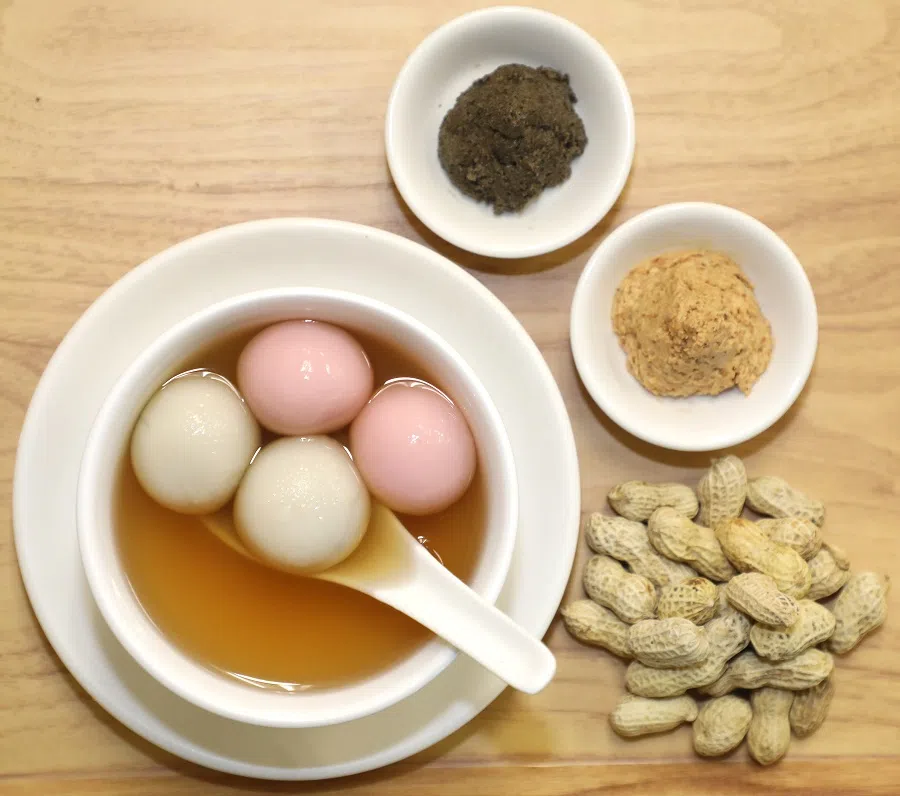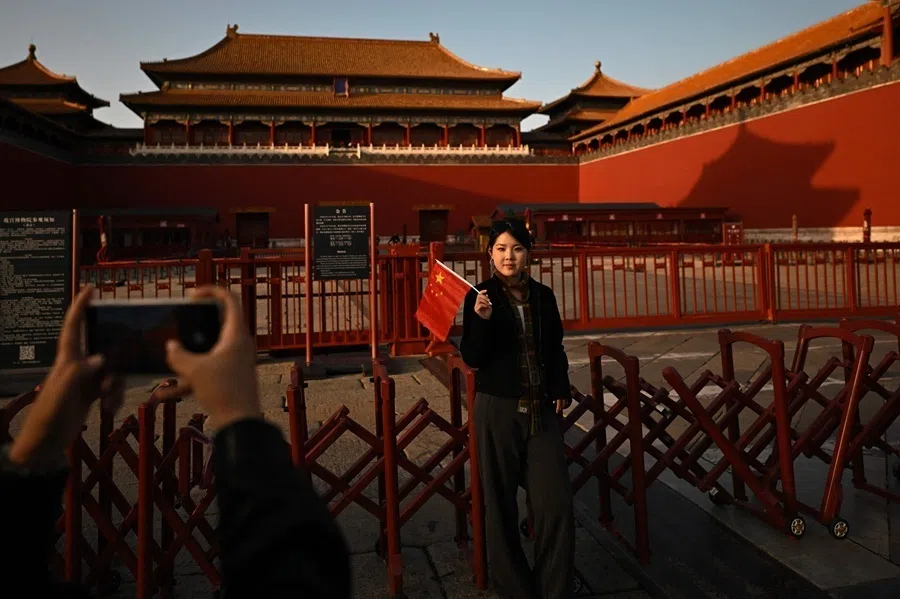Full Circle: Ruminating on the round in Chinese New Year dining
As Chinese around the world celebrate the Lunar New Year, it is almost taken for granted that the round is auspicious and preferred. What is this fascination with the perfect circle, and how does it present itself in the dining traditions and dishes of the season? For ThinkChina's Charlene Chow, the circular jogs the memory of the beautiful things in life.

They were like giant discs, the large Nonya pineapple tarts stacked tightly in a red-capped bottle. Feet swinging off the ground, I leaned forward and waited patiently as Mum took them from the bottle and placed two pieces on each of our plates. I carefully took one in my palm and surveyed its ample crust and heap of golden pineapple filling on top, breathing in the aroma of freshly baked tarts. Like always, not a strand of the lattice top was out of place. Satisfied, I took a large bite and beamed.
It has been years since I've eaten that open-faced pineapple tart from my childhood but the joy of close bonds and simple pleasures has stayed. Back then Mum, Dad, my sister and I would make a road trip to Malaysia for the Chinese New Year holidays. We would make a pit stop at a Peranakan restaurant in Malacca, picking up a few bottles of tart to last us our journey.
Reunion dinner (团圆饭 tuan yuan fan) was spent in many a zi char restaurant, and even a kelong, but whichever resort we ended up at, we would invariably convene a "mini family conference" in the afternoons with tarts and a hot drink. We would speak of our futures, and as the years went by, Mum and Dad would quip - next year it'd be six of us, not four right? We felt safe in our bubble, a circle as tightly bound as the lattice on the mouthwatering tarts.
All a round
At that time it didn't occur to me to question why the tarts were round; they just were, symbolising peace and harmony, and of course, it didn't hurt that "ong lai", the word for pineapple in Hokkien, sounds like wang lai (旺来, lit. "prosperity come"). Nowadays, new-fangled shapes keep coming on the scene, but the simple round is holding its own. For us at least, this year's tarts are still of the globular variety.
For the Chinese, the circular undoubtedly holds great significance too.

There may be some psychological basis behind the round shape's charm. Studies show that the curved and round elicit positive feelings, and the circle is thought to represent "simplicity and perfection", "unity and wholeness", "movement and cyclicality" and "infinity and perpetuity".
For the Chinese, the circular undoubtedly holds great significance too. Think of the reverence for the moon, Baguazhang or "walking in circles" to calm the mind, the yin-yang symbol in Daoism, or the cycle of life in Buddhism. In Chinese Aesthetics in a Global Context, it is said that the ancient Chinese "admired the state of perfection and consummate interfusion, which is actually a manifestation of harmony", and Qing dynasty painter Huang Yue once said, "Roundness is full of vitality, fullness is full of spirit. In harmony with the light, all things are magnificent. In order to create the vigorous and fresh, one must first think of round."
The great reunion
Perhaps that's why at Chinese New Year, not only the round, but the concept of gathering round an often round table is so ubiquitous. I asked chef-owner Yong Bing Ngen of Majestic Restaurant for his take given his years of experience in Chinese dining. He's a great believer in the round himself; even his restaurant logo is a circle drawn around the restaurant name, signifying a place for reunions. He said there has long been a saying that "Heaven is round and Earth is square (天圆地方)", which highlights the auspicious symbolism of roundness. "It represents harmony and happiness, and as the Chinese say, peace brings prosperity."
During the Chinese New Year season, he gets requests from families and companies for round seating. The reunion spread would include favourites such as yusheng served on a round platter and the tubular pen cai, filled to the brim with luscious ingredients. For him, a round table represents a certain equality: "Wherever you sit at a round table, there's not that much difference. So whether you're a boss or not, everyone can sit down and have a good chat."


Virtuous cycle
In our case, Foochow fish balls (福州鱼丸) are a must when we have reunion dinner at home, not only for their bauble shape but their reassuring familiarity, like a favourite song on repeat. Mum gets them from a particular eatery near Beach Road that makes them by hand. They are ping pong ball-sized, dense yet springy, with a dollop of minced pork inside. Each is irregular-shaped but taken together, perfect rounds.
Eating it year in year out still provides a link to our Foochow roots, however tenuous. But more importantly it brings us back to popo...
Since my mum is Foochow and so were her mum and dad, I asked her if popo used to make this dish for her. She said no. Then why does our family eat it? Perhaps it is the node that connects our past, present and future in a never-ending orbit. Eating it year in year out still provides a link to our Foochow roots, however tenuous. But more importantly, it brings us back to popo, the grandma who reached for a porcelain horse figurine in her display case and pressed it into my hand when she heard that I had done well in school, who lived in a silent world after losing her hearing, who left us all too soon.


Warm fuzzies
But sometimes, roundness at Chinese New Year need not be laden with meaning but be just light, fluffy and warm. The humble 汤圆 (tang yuan glutinous rice balls) dessert taught me that. These are typically eaten on yuan xiao jie (元宵节), the 15th day of the Lunar New Year.
Legend has it that 袁世凯 (Yuan Shikai) didn't like the name yuan xiao 元宵 as it sounded too much like 袁消 (yuan xiao) or "be gone with Yuan", and ordered them to only be called tang yuan. But even now, distinctions remain and the northern Chinese eat yuan xiao while people in the south eat tang yuan which are prepared rather differently. In this part of the world, tang yuan are usually peanut/sesame-filled clouds floating in ginger soup or other base and you can find similar dishes in the region such as the Vietnamese che troi nuoc and Filipino ginataang bilo bilo.

I remember trying the latter as a little girl. It was Auntie E's go-to remedy each time I barricaded the front door and bawled when Mum set off for work. Sometimes the waterworks stopped and sometimes it didn't, but the colourful dessert of glutinous rice balls, sweet potato and sago pearls in coconut milk was always a treat.
If we're lucky, this Chinese New Year, we'd manage not to become too round with all the feasting, but keep the warmth and harmony roundness represents in our hearts with our nearest and dearest at our side.
A recent memory of tang yuan is from not too long ago (or perhaps actually a lifetime ago if we think of it as pre-Covid times). It was yuan xiao jie at a new office I started at. People whizzed by and typed away busily as they did every day. But that afternoon, trolleys of tang yuan were trotted out. The dessert was handed round unassumingly, still warm. The office bustled on, but tucking into the pillowy mounds, I had a warm, fuzzy feeling.
If we're lucky, this Chinese New Year, we'd manage not to become too round with all the feasting, but keep the warmth and harmony roundness represents in our hearts with our nearest and dearest at our side. If we manage that, I think we would have squared the circle.
Related: [Chinese New Year Special] Food changes, and so does the world | [Chinese New Year Special] Family rituals of a Shandong Spring Festival | [Comic] Chinese New Year: Don't you want to go home? | [Chinese New Year Special] A bygone era: Chinese New Year celebrations during the time of the Republic of China




![[Big read] Prayers and packed bags: How China’s youth are navigating a jobless future](https://cassette.sphdigital.com.sg/image/thinkchina/16c6d4d5346edf02a0455054f2f7c9bf5e238af6a1cc83d5c052e875fe301fc7)
